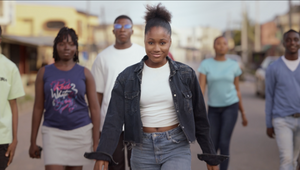
British Skin Foundation's Real-time Installations Demonstrate Risks of Sun Exposure

Cases of melanoma in the UK are at an all-time high, and while studies show that getting sunburnt just once can triple your risk of getting cancer, only 27% of Brits are taking proper precautions to protect their skin.
Drawing attention to the dangers of sun damage, Wonderhood Studios and The British Skin Foundation present ‘The Burnable Billboard’ - the world’s first multiple-location DOOH campaign to reflect the effects of too much sun exposure as it happens.
The idea was a bronze prize winner in the charity category of Ocean Outdoor’s annual Digital Creative Competition which seeks original concepts that push the boundaries of DOOH.

It follows new research from The British Skin Foundation which reveals that 38% of Brits say they have already been sunburnt during the recent spring weather. A third (31%) admit they 'couldn’t be bothered' to apply sunscreen, while 25% say they want to get a tan and overdid it.
Timed to appear on days forecast to have particularly high UV levels, the campaign appears in high footfall areas in three UK cities on 19th June including an all-day takeover of the Meridian Steps at London’s Westfield Stratford City, a three hour takeover of The Totem in West Quay, Southampton, and The Loop screens in Manchester.
Using Ocean’s live data feed technology, and API and data from weather sensors, the individual DOOH screens are updated with the exact UV level in that location in real time every second.

Starting out with beautifully shot, close ups of healthy skin types and tones, the higher the UV exposure, the more the skin begins to change, burn and eventually blister in real time.
This organic, visual effect was achieved by collaborating with a dermatologist and a technical team at The Gardening.club who developed an AI model trained to produce realistic depictions of sun damage within just a few hours of unprotected UV exposure.
This being new territory for all partners, the process was one of exploration and discovery.
Tomas Roope, AI technologist and creative director at The Gardening.club, explained, “Beginning with studio-captured images of healthy, undamaged skin, we worked closely with a dermatologist to create keyframes illustrating each stage of sun damage. Then, using other AI tools, we generated thousands of interpolated frames to illustrate how unprotected skin is damaged by exposure to the sun.”
Scannable QR codes then direct viewers to a British Skin Foundation website offering sun lovers expert advice on how to better protect themselves.

Stacey Bird, executive creative director at Wonderhood Studios, said, “This project has been an epic effort from everyone involved. Tad and Indie’s initial idea was so simple and powerful. It’s been fascinating to bring it to life with the power of AI combined with expert human knowledge of the effects of UV on skin types. We’re hoping the campaign will remind Brits that we still need sun protection, even if we think we don’t ever see the sun.”
Lisa Bickerstaffe, head of communications at the British Skin Foundation, said, “The Burnable Billboard provides the public with a powerful visual representation of the harm UV rays can inflict on the skin, even in the UK climate. At the British Skin Foundation, we’re committed to shifting the often-casual mindset around sun safety, that can lead to life threatening conditions such as melanoma skin cancer. By presenting scientific information in such an innovative and creative way, we are able to educate and inform the public on the importance of protecting their skin.”
Ocean Outdoor head of marketing Jennifer Bell said, “There is a purity to this idea. It is well thought through and location specific, giving it a valuable, personal relevance to OOH audiences in each vicinity. Our competition judges liked the fact that it happens over a period of time, giving the charity a realistic chance to land a powerful message.”















